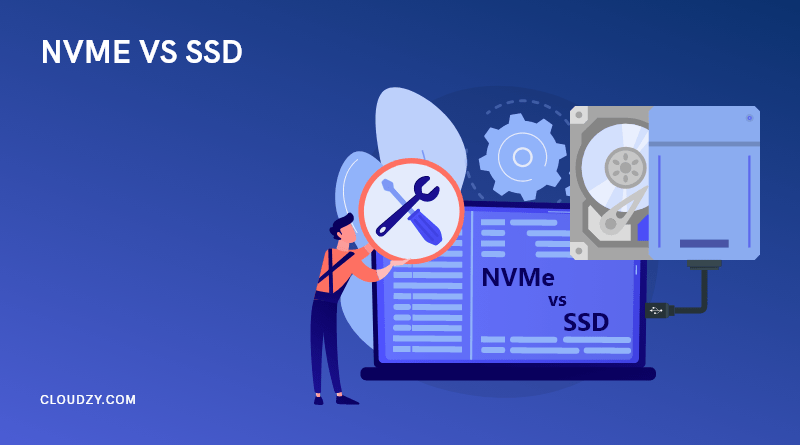the hidden challenges of NVMe SSD integration in legacy system

Introduction to NVMe SSDs and their benefits
The tech world is buzzing with excitement over NVMe SSDs, and for good reason. These sleek storage devices are revolutionizing how we think about speed and efficiency in data handling. With lightning-fast read/write speeds and remarkable durability, NVMe SSDs offer a compelling upgrade for anyone looking to enhance their computing experience.
But what happens when you try to integrate these cutting-edge drives into legacy systems? It’s not as straightforward as it sounds. While the benefits are clear, the journey can be riddled with hidden challenges that may catch even seasoned IT professionals off guard. Let’s unpack this complex landscape together and explore what it takes to successfully bring NVMe technology into older infrastructures while reaping all its rewards.
Challenges of integrating NVMe SSDs into legacy systems
Integrating NVMe SSDs into legacy systems is not as straightforward as it may seem. Many older architectures were designed around traditional storage interfaces, leading to compatibility issues.
The bottleneck often lies in the motherboard and firmware limitations. Legacy systems may lack proper slots or support for the PCIe interface that NVMe relies on. This mismatch can leave users frustrated and searching for workarounds.
Additionally, data transfer protocols are different between old and new technologies. Adapting these protocols requires a deep understanding of both environments, which can be daunting for many IT teams.
Then there’s the issue of drivers and software compatibility. Outdated operating systems might struggle with recognizing newer hardware without extensive updates or modifications, creating further headaches during integration efforts.
Navigating this technological divide demands careful planning and precise execution to ensure successful deployment without disruptions.
Technical considerations for successful integration
When integrating NVMe SSDs into legacy systems, technical considerations are crucial. Start with compatibility checks. Ensure your motherboard supports the necessary interface.
Next, focus on firmware updates. Legacy systems may require specific configurations to recognize new hardware effectively.
Thermal management is another aspect often overlooked. NVMe drives can generate heat that older cooling solutions might not handle well. Evaluate airflow and consider adding fans if needed.
Data transfer protocols also play a significant role in performance optimization. Familiarize yourself with how PCIe lanes impact speed and bandwidth for the best results.
Assess your power supply requirements carefully. Higher energy consumption could strain older units, leading to potential system instability or failures down the line. Keep these factors in mind to pave the way for a seamless transition into modern storage technology without unnecessary hassles.
Impact on performance and cost savings
Integrating NVMe SSDs into legacy systems can lead to significant performance improvements. These drives offer much faster data transfer speeds compared to traditional SATA SSDs or hard disk drives. Applications load quicker, and file transfers become nearly instantaneous. This boost in efficiency is vital for businesses that rely on speed.
Cost savings emerge from enhanced productivity as less time spent waiting translates to more output. Employees can complete tasks without the frustration of slow access times, which often leads to increased morale and satisfaction.
However, initial expenses may seem daunting due to hardware upgrades and potential system modifications. Long-term benefits usually outweigh these costs when considering reduced downtime and improved operational capabilities.
Additionally, energy consumption tends to decrease with newer technologies like NVMe SSDs. Lower power usage not only reduces utility bills but also supports sustainability initiatives within organizations striving for greener operations.
Risks and common mistakes to avoid
Integrating NVMe SSDs into legacy systems can lead to several pitfalls. One major risk is underestimating compatibility issues. Legacy hardware may not support the latest interfaces, resulting in failure to recognize new drives.
Another common mistake is neglecting power requirements. NVMe SSDs often demand more power than older storage solutions, which could strain existing systems and cause instability.
Data loss during migration poses additional challenges. Failing to back up critical data beforehand increases vulnerability.
Moreover, overlooking thermal management can also create problems. High-performance SSDs generate heat; without proper cooling solutions, you risk overheating components and shortening their lifespan.
Rushing through implementation often leads to errors that could have been avoided with thorough planning and testing. Taking time for assessment pays off later by ensuring a smoother transition while maximizing performance benefits.
Strategies for a smooth integration process
Planning is crucial. Start by auditing your current systems to understand compatibility issues. Document the hardware, software, and interfaces in use.
Next, involve stakeholders early on. This includes IT teams and end-users who will be affected by changes. Their input can help identify potential pain points before they become problems.
Testing should be rigorous but flexible. Create a controlled environment where NVMe SSDs can be assessed without risking operational disruption. Allow for iterative testing to refine processes based on findings.
Training staff is equally important. Ensure everyone knows how to manage and maintain the new technology effectively.
Consider gradual integration rather than a complete overhaul at once. Phased rollouts allow you to monitor performance closely while minimizing risks associated with sudden changes in legacy systems.
Conclusion: The importance of staying updated with technology advancements
The rapid pace of technology requires organizations to stay ahead of the curve. Embracing advancements like NVMe SSDs is essential for maintaining competitive advantage, especially in a landscape that increasingly values speed and efficiency.
Integration challenges may seem daunting, but they present an opportunity for growth and adaptation. By understanding these hidden challenges and addressing them with strategic planning, companies can leverage the benefits of NVMe storage.
Staying updated not only enhances performance but also fosters innovation within teams and processes. Engaging with tech communities or groups such as Geeks Callout London can provide valuable insights into navigating this evolving landscape.
Emphasizing continuous learning ensures businesses don’t just keep up; they thrive in an era where data demands are ever-increasing.









